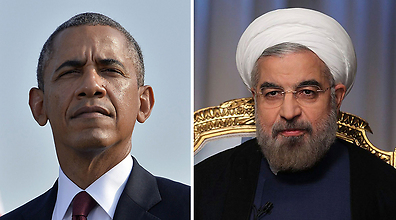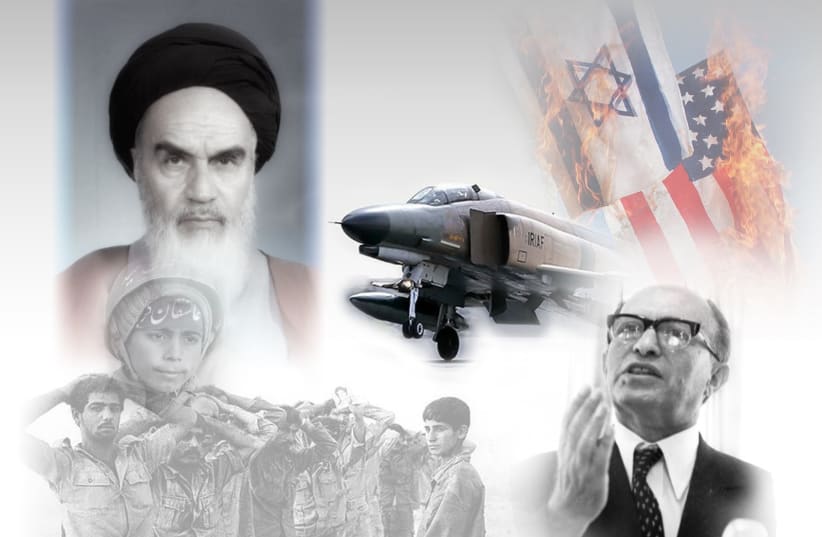Iran’s nuclear deal: Four-bundle effects and concerns
Dr. Majid Rafizadeh/Al Arabiya/Friday, 17 July/15
It is crucial not to raise our expectations when it comes to the recent nuclear agreement reached between the P5+1 (China, France, Russia, the United Kingdom, and the United States, plus Germany) and the Islamic Republic. To have a full and realistic view of the deal, it is imperative not to conflate our analysis with hope. The Iran-P5+1 nuclear deal has four crucial categories and dimensions that should be examined separately. Nevertheless, these four brackets do interact with each other, sometimes countering and contradicting each other, and inevitably creating some unintended consequences and excesses. But Iran’s policy (whether domestic or foreign) will be shaped by the interactions among these four circles.
First bracket: The nuclear deal and Iran’s domestic policies
The first critical question to address is whether the nuclear deal can usher in a new era of freedom, social justice, and a better life for Iranian people themselves. Iran’s regional policy poses no threat whatsoever on the hold-on-power of the Iranian ruling establishment and particularly the rule of Iran’s Supreme Leader Khamenei
Although many Iranians were joyful and celebrated in the streets, some soon had doubts and fundamental questions to ask.” We hope that the deal can improve our living standards and provide jobs for the youth. But I am not very optimistic that we are going to see financial benefits. Corruption is high. Most of the money will go to the Supreme Leader [Ayatollah Ali Khamenei] and the military possibly. We will not be able to fully participate in the political process, do or wear whatever we like” Nastaran, an Iranian PhD student living in Tehran, said to me.
We are not likely to see any improvement in matters such as social justice, personal freedom, or political prisoners. In fact, in order to re-establish and reassert their monopoly of power and coercion, Iran’s hardliners (the Basij, Iran’s Islamic Revolutionary Guard Corps, the intelligence -etela’at – etc) will attempt to ratchet up their methods and means of controlling the society. What the hardliners and ruling establishment fear the most is political (or economic) liberalization, which might lead to a soft cultural revolution and empowerment of the secular or oppositional groups.
What they fear most is the cultural soft power of the West, mainly the United States, infiltrating Iranian society. Iranian leaders are cognizant of the fact that economic liberalization accompanied with political liberalization can endanger their hold on power. In other words, a more closed off Iran ensures the current leadership of their rule and control over the population. It is important to remember that when President Khatami, the reformist, ruled as Iran’s president for eight years, the hold-on-power, application of coercion and hard power was increased by the hardliners.
Second bracket: The nuclear deal and regional ramifications
Will Iran alter its fundamental regional policies?
It is not realistic to argue that the nuclear deal is going to completely change the Middle East and Iran’s regional behavior.
The Islamic Republic rules and implements its foreign policy based on two categories: national interest and revolutionary principles. Iran’s national and economic interest justified the nuclear deal. Iran’s crippled economy was endangering the hold-on-power of the ruling establishment- which is why they tried hard to secure the nuclear deal.
Yet, Iran’s regional policy poses no threat whatsoever on the hold-on-power of the Iranian ruling establishment and particularly the rule of Iran’s Supreme Leader Khamenei. In other words, there is no incentive for the supreme leader to change his opposition towards the United States, other regional powers, his support for Bashar al-Assad, Hezbollah, the Houthis, the Iraqi ruling Shiite coalition, and so on.
In fact, in order to keep his legitimacy and maintain his hard-line social base, the supreme leader and the senior cadre of IRGC need to hold onto their over 35-years of revolutionary principles. Otherwise, they will subvert the underlying characteristics and foundation of the Islamic Republic. They simply cannot take the risk of changing the 35-years of institutionalized revolutionary ideologies. It is totally inimical to the geopolitical, parochial, and economic interest of the Office of the Supreme Leader and the IRGC.
Finally, if Iran commits to the deal, it will receive approximately $100 billion in frozen assets as soon as the month of January. Some of Iran’s political figures will likely be removed from the U.N. blacklist if sanctions are removed. In a few years, the Islamic Republic will be capable of exporting and importing ballistic missiles and conventional weapons legally. The arms embargo can be lifted in five years. Iran will be cable of reintegrating into the international financial system, and export more oil. It might take Iran several months to reach this level according to U.S. authorities, or in “a matter of weeks” according to an Iranian official. All of this indicates that there is significant concern that Iran will be emboldened to increase its support for its allies and proxies in the Arab world and export its revolutionary ideology more forcefully. This will likely fuel the regional tensions and potentially turn the current turmoil into conflagration. On the other hand, economically speaking, trade deals between Iran and some regional powers, primarily the UAE and Oman will likely increase.
Third bracket: Nuclear deal, United Nations, NPT, and the complexities
Although the deal will be signed soon, and although it has been described as a good deal by the relevant parties, there exist several crucial ambiguities and unanswered questions about the IAEA’s role and the military dimension of Iran’s nuclear program. Some of the U.N. authorizations and timing to lift economic and financial sanctions clashes with the timing that IAEA has to obtain a full picture of Iran’s nuclear program. The IAEA’s role in the deal is not clear-cut as well. There is only a brief explanations of how the IAEA can implements its verification regarding one of the most crucial military sites heavily suspected to be linked to Tehran’s nuclear program- Parchin.
There exist several dilemmas in the full 159-page text of the agreement, and the statements issued by the American and Iranian officials. Some have simply been playing with words and applying strategic and tactical statements to defend their position. According to President Obama, “this deal is not built on trust. It is built on verification. Inspectors will have 24/7 access to Iran’s nuclear facilities.” Nevertheless, the access for U.N. and International Atomic Energy Agency, and IAEA inspectors does not appear to be 24/7. It appears that the U.N. and IAEA inspectors’ access is not a guarantee. There is a whole bureaucratic process to get access or be denied one. The timing of and lifting of sanctions can come before the IAEA has full detail of Iran’s nuclear program and its military facet. The Islamic Republic has over 10 nuclear or uranium enrichment sites (including in Shiraz, Bushehr, Ardakan, Tehran, Saghand, Esfahan, and Karaj).
In addition, it is not clear whether Iran will legally endorse the Additional Protocol of the Nuclear Non-Proliferation Treaty (NPT). The deal indicates that the Islamic Republic will accept the Additional Protocol “provisionally”. This can take a considerable amount of time, since there is not any fixed timetable mentioned in the deal. This can occur after the sanctions are supposed to be removed. In addition, the limit on research and development is only eight years, not 15.
The most crucial parts of the deal still remain to be implemented. The current deal is an understanding, agreement and accord. A deal is a deal when all terms of the agreement are fully implemented and sanctions are lifted. It remains to be seen whether both sides will have the same interpretation of the deal. Will both sides face differences and come into tension when they begin implementing the deal in detail (such as U.N. inspectors visiting Iran’s nuclear sites)? Secondly, it remains to be seen whether Iran will completely adhere to the technical nuances of the deal. But, what is clear is that as long President Obama is in power, it is less likely to witness any dispute between Tehran and Washington. In other words, by the time President Obama leaves office, most of the economic sanctions will have been lifted, according to the timetable of the deal, and the Islamic Republic will have achieved its goals.
Finally, will Iran stick to the deal? When the economic sanctions are lifted, there is no incentive for the Iranian ruling establishment to continue committing themselves to the agreement. The major purpose of the deal for Iranian leaders was getting sanctions removed. Why should they continue the deal?
Fourth bracket: Iran-U.S. and Iran-EU relationships
Iran’s positions towards the United States and European countries have been slightly different from the beginning of the Islamic Revolution. While Iran’s revolutionary ideology is based on opposing America, Tehran has had slightly more amicable ties and diplomatic relationships with European countries, economically and geopolitically speaking.
After the deal, the economic and political ties will likely improve between the Iranian governments and EU countries. Considering Iran-U.S. ties, the significant issue is that Iranian and American diplomats have established a direct line of connection and communication (thanks to the nuclear negotiations) after over 30 years of hostility.
From President Obama’s perspective, the absolute and real winner of the deal is himself. Whether the deal succeeds or fails in the future, whether Iran complies with the terms and sanctions are lifted, President Obama will argue that he has achieved his lifetime Middle Eastern and foreign policy legacy. As time passes, the public will view the deal as the President’s foreign policy legacy as well. The problem is whether the deal can resolve the issue or increase tensions between the West and Iran in the future- what will be remembered is that President Obama scored a victory and reached a landmark nuclear deal with Iran after more than decade of stand off. President Obama is, and will be, triumphant even if the deal collapses in the future.
Finally, when it comes to regional challenges, while the U.S. will continue to cooperate with Iranian leaders, tactically speaking, American leaders can at least speak directly with Iranian leaders for any strategic tension. This will alleviate the increased hostility between Tehran and Washington and might lead to both tactical and partial strategic cooperation. The interactions between the aforementioned four categories define Iran’s policy after the deal.



















